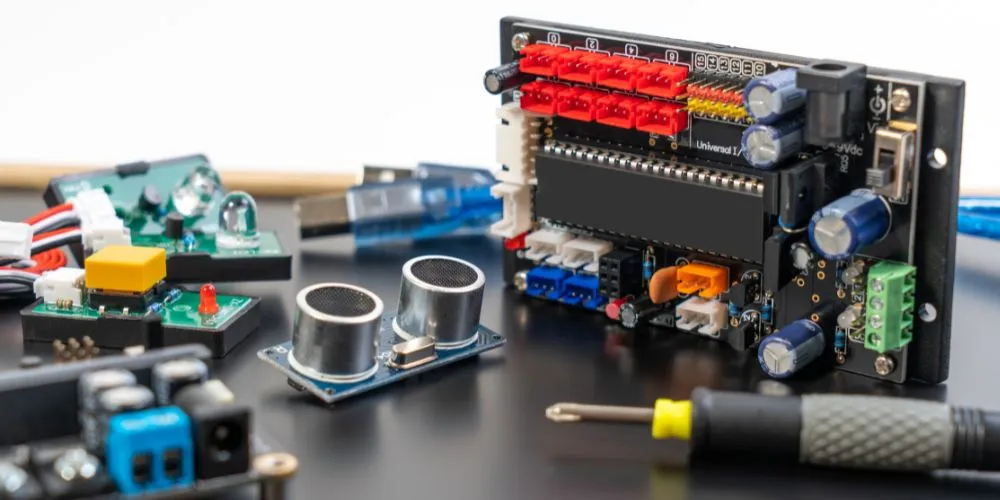Microcontrollers, often called the “brains” of embedded systems, are integral components in various electronic devices. This article conducts a comprehensive analysis of the current state of the microcontroller market, exploring key trends, market dynamics, and challenges and offering insights into the future outlook.
Market Overview
The microcontroller market is a dynamic and rapidly evolving sector within the semiconductor industry. These compact integrated circuits serve as the central processing unit for various applications, ranging from consumer electronics and automotive systems to industrial automation and Internet of Things (IoT) devices. A diverse range of microcontroller types, architectures, and applications characterizes the market.
Microcontrollers are designed to execute specific tasks within electronic systems, providing data processing, control, and communication functionalities. Technological advancements have made microcontrollers more powerful, energy-efficient, and versatile, enabling innovation across various industries.
The approximate decision of the Techgolly market research team is the global Microcontroller market size was valued at least USD 35 billion in 2023 and continues to be projected to reach up to USD 68 billion by 2030. The growth will continue at a compound annual growth rate (CAGR) of 8% to 10% from 2023 to 2030.
Key Market Trends
The microcontroller market is experiencing several significant trends:
IoT Integration
The proliferation of IoT devices is a key driver for the microcontroller market. As IoT applications expand in areas such as smart homes, industrial automation, and healthcare, the demand for microcontrollers capable of managing connectivity, data processing, and control functions is rising.
Edge Computing
Microcontrollers are playing a crucial role in the implementation of edge computing. By processing data closer to the source in real time, microcontrollers enhance the efficiency of systems, reduce latency, and support applications that require quick decision-making.
Increased Processing Power
Advancements in microcontroller architectures and manufacturing processes contribute to increased processing power within smaller form factors. This trend allows for the development of more sophisticated and feature-rich electronic devices.
Low Power Consumption
Energy efficiency remains a critical focus in the microcontroller market. Low-power microcontrollers are in high demand for battery-operated devices, wearable technology, and other applications where power consumption is crucial.
Challenges
Despite the positive trends, the microcontroller market faces certain challenges:
Security Concerns
As microcontrollers become ubiquitous in connected devices, ensuring the security of these systems is a significant challenge. Protecting against cyber threats, unauthorized access, and data breaches requires continuous innovation in security features.
Short Product Lifecycles
The semiconductor industry, including the microcontroller market, is characterized by short product lifecycles. Rapid technological advancements necessitate frequent updates and new releases, posing challenges for manufacturers and system designers regarding product compatibility and support.
Global Supply Chain Disruptions
The microcontroller market is not immune to global supply chain disruptions. Factors such as geopolitical tensions, natural disasters, and the ongoing semiconductor chip shortage can impact production and availability, affecting industries reliant on microcontrollers.
Future Outlook
The microcontroller market holds several key developments for the future:
Integration of Artificial Intelligence
Microcontrollers are expected to integrate more advanced artificial intelligence (AI) capabilities. Edge AI, enabled by microcontrollers, will empower devices to perform complex computations locally, enhancing responsiveness and reducing dependence on centralized processing.
Expansion in Automotive Electronics
The automotive industry is poised to be a significant growth driver for the microcontroller market. As vehicles become more connected, autonomous, and electric, microcontrollers will play a vital role in managing various electronic systems, including advanced driver-assistance systems (ADAS) and in-vehicle infotainment.
Continued Growth in IoT
The growth of IoT applications will continue to drive the demand for microcontrollers. From smart home devices to industrial sensors, microcontrollers will be at the forefront of enabling connectivity and intelligent control in diverse IoT ecosystems.
Conclusion
The microcontroller market stands at the forefront of technological innovation, powering the electronic devices that have become integral to our daily lives. The future outlook remains promising as the market addresses security challenges, navigates short product lifecycles, and adapts to global supply chain dynamics.
The continued integration of advanced technologies, expansion into emerging sectors like automotive electronics, and sustained growth in IoT applications position microcontrollers as essential components in the ongoing digital transformation of industries. Navigating challenges and capitalizing on emerging trends will be key to unlocking the full potential of microcontrollers in shaping the future of electronic systems.










